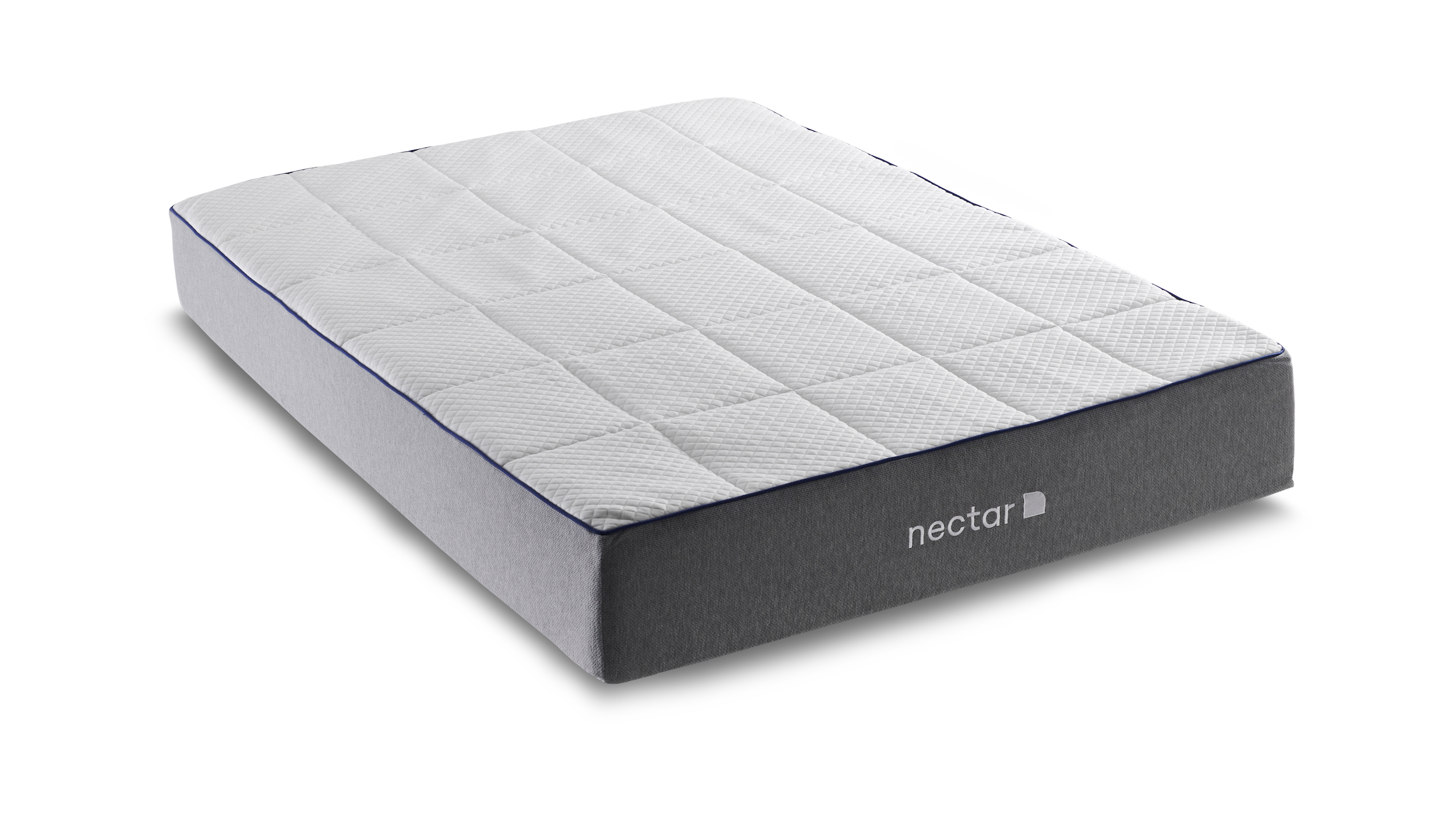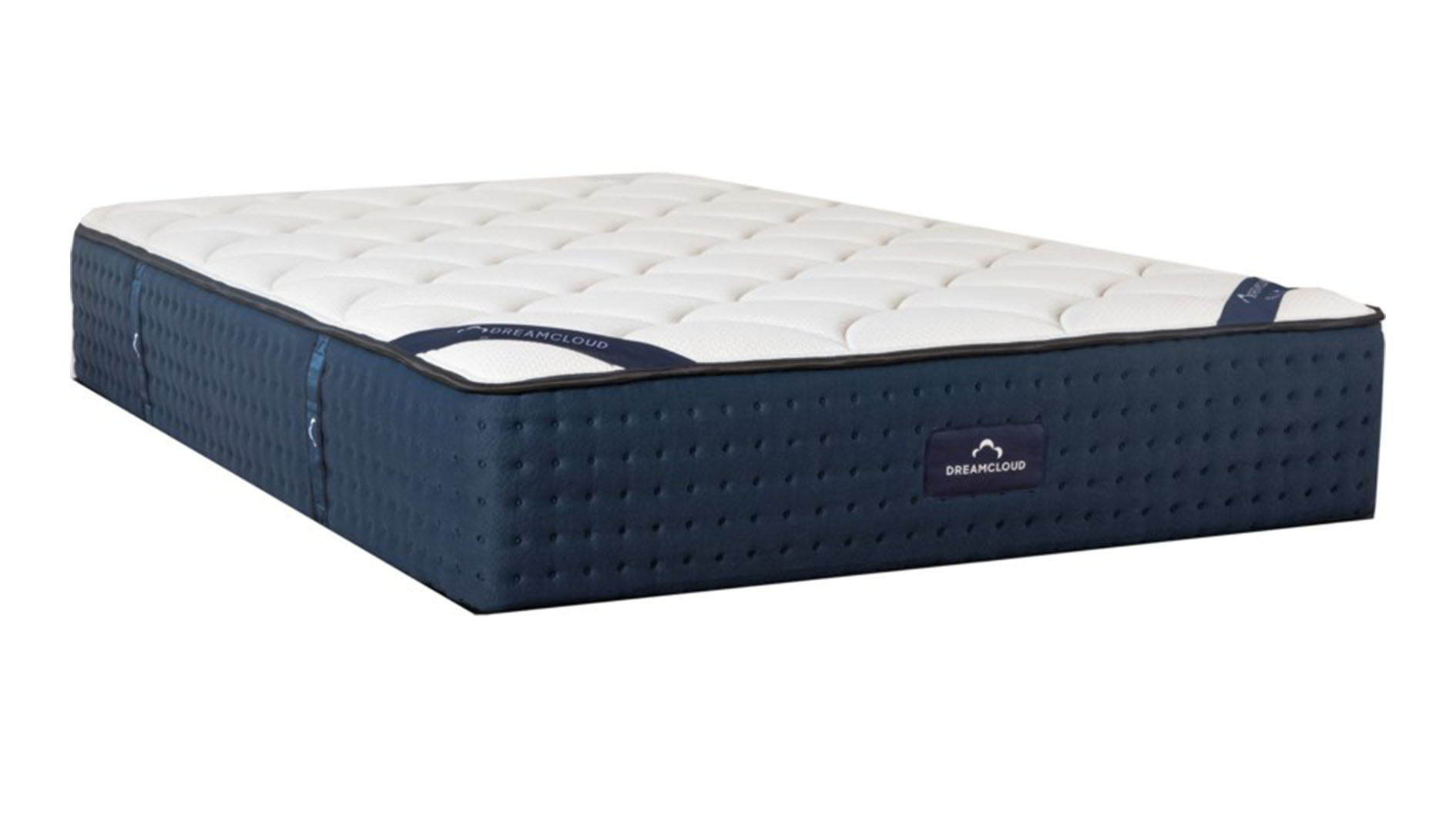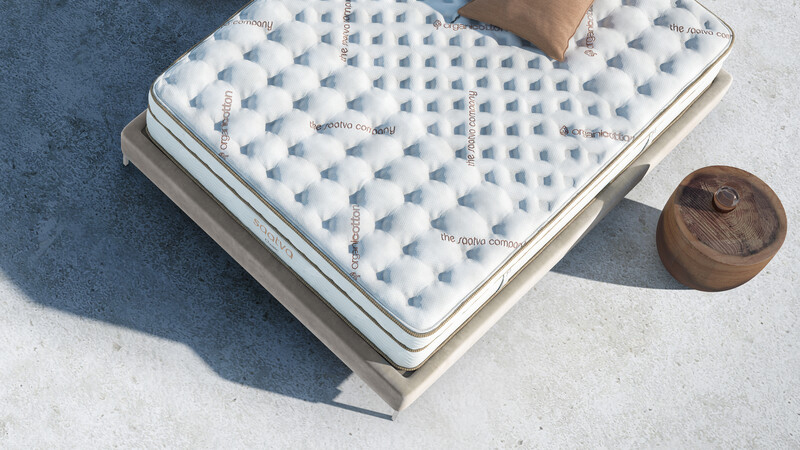Memory foam vs hybrid mattresses: which is the best type for you?
We compare the pros and cons of memory foam vs hybrid mattresses to help you pick

Memory foam vs hybrid is one of the biggest decisions you’ll need to make when choosing the best mattress for your sleep. These are hands-down the two most popular types of mattress, and while both have big benefits for your sleep comfort, there are some key differences that will help you pick between them.
In our memory foam vs hybrid mattress head-to-head, we look at each type in terms of comfort, support, motion isolation and pressure relief. We’ll also introduce you to some key brands, and run through the sorts of prices you can expect to pay for memory foam and hybrid beds.
Read on to discover the pros and cons of each mattress type, comparing how the contouring multi-foam layers of a memory foam bed might suit one sleeper over another, and why the spring-and-foam construction of a hybrid is better for hot sleepers and couples. And once you've made your decision, we have dedicated guides to the best memory foam mattresses and the best hybrid mattresses to help you find the perfect model for you.
Memory foam vs hybrid mattresses: At a glance
- Memory foam models are cheaper
- Hybrids tend to last longer
- Both are good choices for back pain
Memory foam is generally a more affordable mattress compared to hybrids, but the biggest selling point is that they create a comfy, body hug feel where you slightly sink into the foam. Not only does this cradle your body so you’re more relaxed falling asleep, it cushions your joints and relieves pressure on your main impact points such as your hips and back.

All-foam beds are constructed in layers using different densities of foam and memory foam, with a firmer density at the base acting as the foundation and a softer layer at the top for instant cushioning. Some basic types of foam tend to sleep warmer than hybrids, although plenty have features such as cooling gel or graphite to keep the sleeper comfortable. If you're looking for a cooler all-foam mattress, check out our guide to latex vs memory foam.
Hybrid mattresses typically combine memory foam coupled with a pocketed coil layer (or two) to offer more bounce and support. Because of the construction hybrids tend to be heavier and more expensive, but they are often more durable than all-foam models.
If you like the feeling of sleeping on top of your mattress rather than sinking into it, then you’ll likely prefer a hybrid. Larger body frames may also prefer the support on offer with a hybrid, although many also come with a softer top layer to give you an instant hit of snugness.
Sign up for breaking news, reviews, opinion, top tech deals, and more.
Memory foam vs hybrid mattresses: Key differences
- You sink into memory foam yet rest on top of a hybrid
- Memory foam offers a body cradling effect
- Hybrids are bouncier and more breathable
One of the biggest differences between memory foam and hybrids is the feel, with sleepers enjoying the feel of slightly sinking into memory foam but resting on top of a hybrid. It all depends on personal preference too, because while hybrids are more responsive, memory foam beds offer excellent motion isolation and pressure relief.

Another key difference is in the design, with memory foam mattresses being constructed entirely of foam layers plus a fabric cover, while hybrids combine layers of foam (or other similar materials), with a layer or two of springs for enhanced breathability and back support.
If you are looking for an affordable option, then you will most likely find lower prices with memory foam beds, while hybrid mattresses are more expensive owing to the more complicated construction, the variety of materials used and the durable build.
Memory foam vs hybrid mattresses: Prices and trials
- Hybrids are more expensive than all-foam beds
- You’ll find monthly sales on both types
- A good mid-range queen mattress costs around $900
As mentioned, memory foam mattresses generally tend to be cheaper than hybrids, and you can often find them priced from around $300-$500 for the more affordable to mid-range brands. Hybrids nearly always start at a couple of hundred dollars more, with the average price starting from around $700. Why the higher cost? Because hybrids use foam and either coils or springs, so the addition of extra materials gets passed on in terms of the cost to you.
It’s helpful if we look at the prices for popular memory foam and hybrid mattresses from leading sleep specialists. This will give you an idea of how much you can expect to pay, discounting any sales you may come across from the brand you are interested in.
Saatva is arguably one of the most well-known online mattress manufacturers in America, and its best-selling Classic innerspring hybrid starts from $887. As we explain in our Saatva Classic mattress review, this is a fantastic price for a handcrafted luxury hybrid. You can usually save anywhere from $200-$250 on the Classic in the Saatva mattress sale.
Nectar is another well-known brand in the UK and the US, and its highly rated Nectar Memory Foam starts from just $499 in the Nectar mattress sale. That’s a fantastic price for a well made mid-range bed-in-a-box, and it comes with free bedding too. Let’s look at some prices for other sought-after memory foam and hybrid models…
Memory foam
- Zinus Green Tea: from $177
- Emma Original: from $551 / £249.50
- Avocado Green: from $1,099
- Casper Original: from $895
- Cocoon by Sealy Chill: from $499
Hybrids
- Brooklyn Signature: from $599
- Helix Midnight: from $599
- Purple Plus: from $1,199
- The WinkBed: from $849
- DreamCloud: from $699 / £449.55
Both memory foam and hybrid mattresses come with a sleep trial. These range from 60 to 365 nights, with the average being 100 nights. We strongly recommend only buying from a brand that offers a risk-free trial, as these testing periods enable you to get a good feel for the bed to make sure it keeps you feeling comfortable and supported night after night.
Most trials are risk-free, so if you decide it’s not for you within the trial length, then you can send the mattress back and get a refund. Returns aren’t always free – Saatva, for example, charges a $99 processing fee – though we are seeing more brands offering free returns as a way to be more competitive.
Memory foam vs hybrid mattresses: Pros and cons

Memory foam pros:
When it comes to cushioning pressure points such as the hips, shoulders and knees, memory foam is a superb option. This makes it particularly great for side sleepers who want to keep their spine aligned while reducing pain on their hips, shoulders and knees.
Memory foam mattresses are also good for co-sleepers, as there’s minimal motion transfer. That means you won’t disturb each other so much when changing sleep position or getting in and out of bed. They’re silent too, with none of the squeaks and creaks that can happen with a spring model. If you're contemplating sleep divorce, a good memory foam mattress can help you and your partner enjoy sharing a bed again.
Finally, choosing a memory foam option is usually the cheaper option (though there are definitely premium versions around). So if you’re on a tighter budget, you will generally find the biggest bargains here.
Memory foam cons:
The cheapness of memory foam also links to its longevity, and, generally speaking, the lifespan of an all-foam mattress is shorter than a hybrid as it’s more prone to dips and sags (learn more in our feature on how to fix a sagging mattress).
Speaking of which, if you don’t like the feeling of sinking into a mattress then memory foam is not the right fit for you. This sinking-in can also make it harder to switch position and get out of bed, and it can contribute to overheating during the night. Memory foam mattresses can sleep hot, as the dense foam has a reputation for absorbing heat and trapping it close to the body.
So if you tend to sleep hot you might want to either choose a bed with extra cooling features, such as gel- or graphite-infused foam, or opt for a more breathable hybrid.

Hybrid mattress pros:
Hot sleepers can usually rest easy on hybrids as they offer a more breathable surface to rest upon without the body sinking in. The springs also make for a cooler bed because air flows right through the bed to keep you at a comfortable temperature throughout the night.
The more supportive feel of a hybrid also makes it a better choice for heavier weight sleepers, as well as people who sleep on their stomach or back. Furthermore, the hybrid construction with sturdy coils makes the bed itself more durable and long-lasting. So if you’re looking for a mattress that will last you for several years to come, then a hybrid could be better value in the long run.
Hybrid mattress cons:
As hybrids tend to be more expensive, they might not be suitable if you are on a small budget or need an affordable mattress for a guest room. Also, because of their construction and durability hybrids tend to be heavier and a bit more cumbersome to maneuver, making them more difficult to clean (read our feature on how to clean a mattress for guidance).
Finally, if you want a softer bed or one with minimal motion transfer and less bounce, then don’t pick a hybrid. How come? From our experience testing different models, there is a certain amount of movement with hybrids – much more so than with all-foam models.
Memory foam vs hybrid mattresses: Key brands
- All top sleep brands sell memory foam and hybrids
- Memory foam is still the most common of the two
- Hybrids are more popular in America
Most sleep brands sell both all-foam and hybrids, so there’s plenty of choice these days. Eco-conscious shoppers will love the hybrid and memory foam selections at Saatva, with the memory foam Loom & Leaf starting from $1,049. Avocado Green is another great organic sleep brand, making natural latex and vegan hybrids priced from $1,099 at Avocado.

Other top brands for hybrids include DreamCloud with its flagship model starting at $899 at DreamCloud (see our DreamCloud Mattress review for all the details), and WinkBed with its leading option – a favorite among luxury hotels, no less – priced from $1,149. We also rate the Helix Midnight, from $599, a reliable and pressure relieving hybrid for side sleepers.
If you’re looking for the ultimate memory foam bed for deep pressure relief, then look no further than Tempur-Pedic. The company uses its own Tempur material based on the original memory foam developed by NASA. Tempur-Pedic also has hybrid variations, with prices from $1,699 for the Tempur-Cloud, it’s cheapest foam and hybrid model.
Memory foam vs hybrid mattresses: Which should you buy?
If you’re a side sleeper looking for cushioning comfort and a slightly softer feel, then the best mattress choice for you is memory foam. The same goes if you sleep with a partner who tosses and turns, as the motion isolation with memory foam is superior to what you will get on an innerspring or hybrid.
If you need extra support then a hybrid will offer you the best of both worlds: coziness and stability. These beds also tend to be more durable, so you could find it lasts longer (we cover this more in our feature answering how long does a mattress last). If you sleep hot, then a hybrid is a better fit as they sleep cooler, with the layer of coils providing plenty of space for air to circulate and keep you at a comfortable temperature for sleeping.
All leading brands offer mattress trials, so if you’re still unsure what to pick, then try one out risk-free to see for yourself which type is right for you when it comes to memory foam vs hybrid mattresses.
If you think your current mattress has a little more life left in it, yet it could do with a boost of either softness, firmness or cooling, consider investing in one of the best mattress toppers for your budget. We'd also recommend using a good quality mattress protector to keep your bed safe from stains, spills and bacteria.
Read more:
- The best pillows for every sleep position
- The best wake-up lights for all budgets
Grace Franks is an experienced sleep and mattress writer who has written for our sister sites Tom's Guide and T3, among other brands. She's interested in organic and eco-friendly sleep products, and how good sleep can improve our general wellbeing. When not writing about mattresses, Grace loves reading, creative writing, and practicing yoga.
